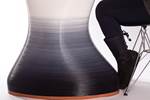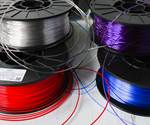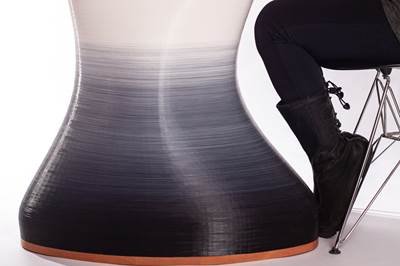Better Material Recapture, Reuse Through 3D Printing (Video #5)
3D printing helps to simplify both manufacturing of a product and material recapture at the end of its usable life. The key is having a plan at the beginning. More in this video, the last in our series on 3D Printing and the Circular Economy.
If you’ve followed our 3D Printing and the Circular Economy series all week, you’ll have learned that additive manufacturing (AM) supports a more sustainable economic model in the following ways: enabling new material options and choices; supporting new design opportunities; providing an efficient, distributed alternative to centralized manufacturing; and building better products. But there’s one final step in the circular economy: end-of-life, or what happens to parts, products and materials at the end of their usable lifespans.
3D printing can play a role here too, by supporting simpler recycling, easing product recapture and reprocessing, and providing new life for recycled materials, just to name a few benefits. The key, however, is planning for the end right at the beginning. Learn more in this video, the final 3D Printing and the Circular Economy installment.
Resources and Related Links
- Videos in this series: What Is the Circular Economy? | Materials | Design | Manufacturing | Product | End-of-Life
- Assembly consolidation for easier recycling
- Product development that includes recapturing products at the end of their lifespans
- Repurposing high-value material for 3D printing
- 3D printing as source of new life and revenue from scrap
Transcript
Welcome to our video series on 3D printing and the circular economy. In this video, we'll talk about end-of-life scenarios. The last stage in closing this loop.
If you think about the linear economy, usually a manufacturer's obligation over their product ends once the product has been sold, or maybe once a warranty has expired. It's completely up to the consumer what they do with the product at the end of its lifespan. Best-case scenario, maybe they sell it or give it away, take it to a recycling center. But more often than not, that product is probably going to end up in a landfill.
Now in the circular economy, remember, our goal is to get from here to here, to take this product and turn it into some kind of material that can feed back into this cycle. And there are a couple of different routes that you can take to get there.
The first would be refurbishing or reusing. So think about returning your used inkjet cartridge or maybe your empty filament spool to the manufacturer. It's possible to take that product and not fundamentally change it, just turn it into something new that can be used again.
The next opportunity would be composting. If you're working with a material like say PLA, it might be possible to have customers return that product to a local composting facility where it can be turned back into its natural elements and in kind of a roundabout way become feedstock again,
A third possibility would be recycling. And I'm not just talking about recycling 3D printed products. There are a lot of companies right now that are figuring out ways to take other kinds of materials and recycle them into feedstock for 3D printing. They're working with all kinds of things, like taking machining chips and turning them into metal powders, or taking plastic bottles, post-industrial waste, and turning it into pellets or filament for 3D printing.
There are a lot of different routes you can take. But the key is to know where you're headed before you begin, in the product development stage. Before you even get to design and manufacturing, you need to know what's going to happen to that product at the end of its lifecycle. That's how we close this loop. That's how we get to a circular economy and a more sustainable future.
If you enjoyed this video series, you can find more about 3D printing, the circular economy and industrial additive manufacturing at AdditiveManufacturing.Media, TheCoolPartsShow.com and gbm.media/CircularAM. Thank you for watching.
Related Content
Creating Designs That 3D Printing Experts Love
3D printing can create virtually any shape imaginable, but that doesn’t mean it will be easy to print. How to design parts that are printable as well as functional.
Read MoreDrones Take Flight with Metal and Polymer 3D Printed Parts: The Cool Parts Show Bonus
Drones produced by Cobra Aero now incorporate many 3D printed parts made through laser powder bed fusion and Multi Jet Fusion processes.
Read More3D Printed Brake Panel for the Rail Industry: The Cool Parts Show #52
In this episode of The Cool Parts Show, laser powder bed fusion simplifies the manufacturing of air brake panels for light rail systems made by Wabtec.
Read MoreQualification Today, Better Aircraft Tomorrow — Eaton’s Additive Manufacturing Strategy
The case for additive has been made, Eaton says. Now, the company is taking on qualification costs so it can convert aircraft parts made through casting to AM. The investment today will speed qualification of the 3D printed parts of the future, allowing design engineers to fully explore additive’s freedoms.
Read MoreRead Next
How 3D Printing Changes Products in the Circular Economy (Video #4)
3D printing makes possible new and different consumer goods, but also changes the buyer's relationship to those goods. More in this video, part of our series on 3D Printing and the Circular Economy.
Read MoreWhy “Recycled” Doesn’t Mean Inferior for 3D Printing Filament
GreenGate3D’s PET-G filament is made from recycled plastic, but that doesn’t diminish its quality. How a recycler found a new business opportunity in 3D printing, and how this success might point the way to a more effective recycling ecosystem.
Read MoreThe Challenge of Reclaiming Carbon Fiber for 3D Printing
Carbon fiber composite materials weigh significantly less than steel while offering comparable strength and performance. But recovering and recycling continuous fiber for additive manufacturing applications — without any effect on the mechanical properties — has proven extremely difficult. Here is how Oak Ridge National Laboratory is working to solve the challenge.
Read More
.jpg;width=70;height=70;mode=crop)




















